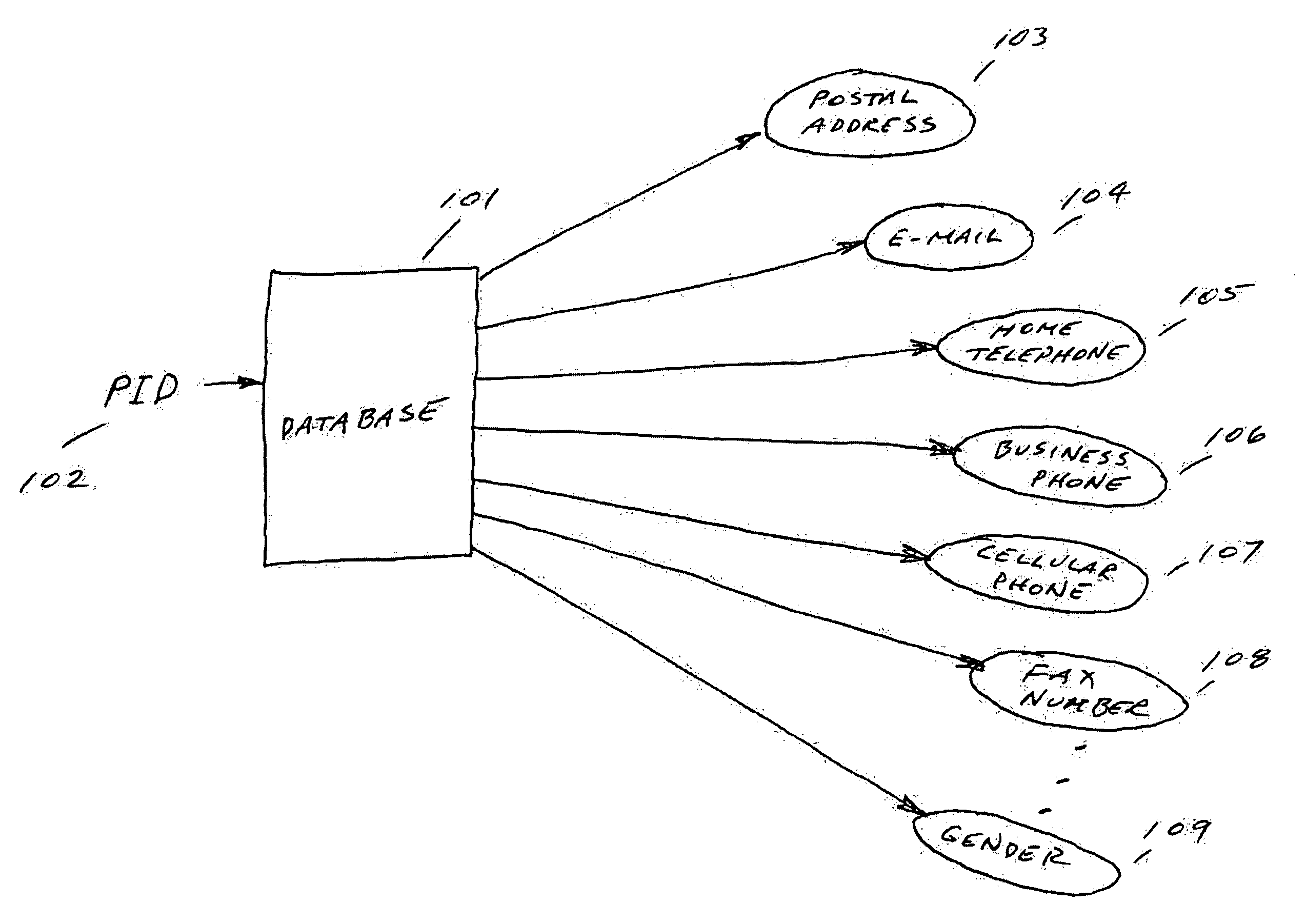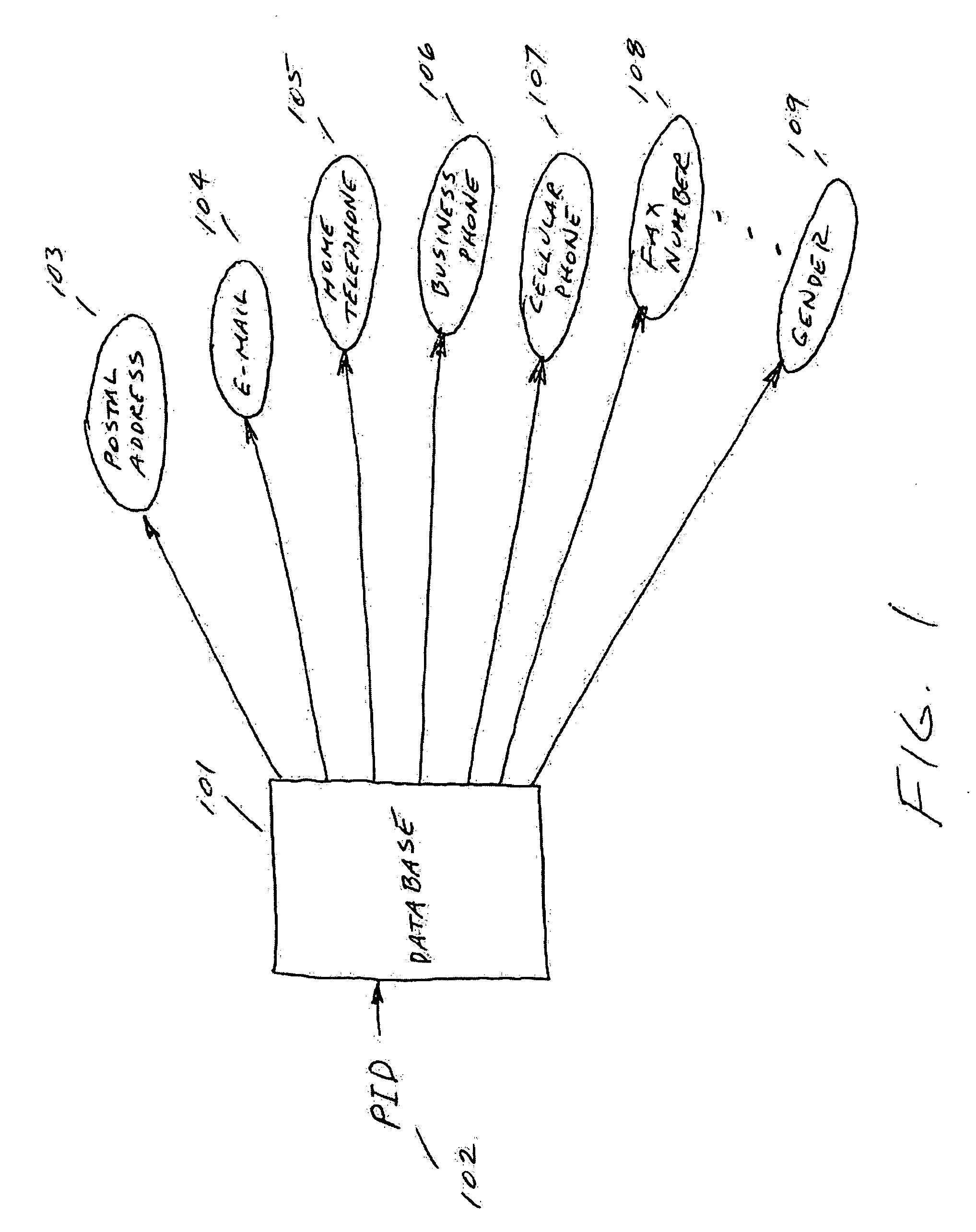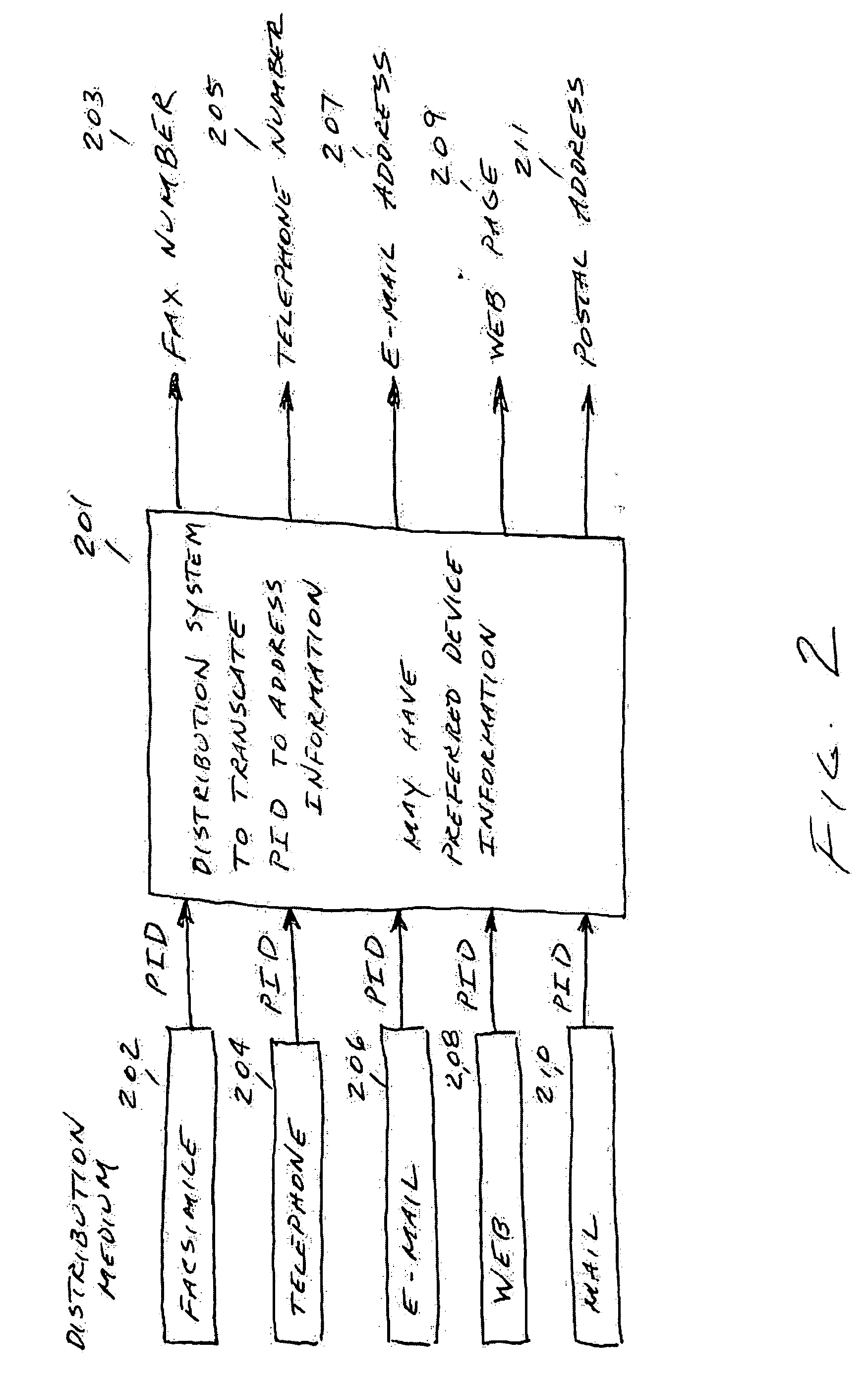Personal information database with context-driven information retrieval
a personal information and database technology, applied in the field of personal information database with searchable database of information, can solve the problems of inability to efficiently and efficiently manage, many persons and business entities have lost positive control over both the location and accuracy of such information, and have no system in place that allows efficient operation, etc., to achieve convenient maintenance and management, and to keep track of a person.
- Summary
- Abstract
- Description
- Claims
- Application Information
AI Technical Summary
Benefits of technology
Problems solved by technology
Method used
Image
Examples
Embodiment Construction
[0037] There is described herein a personal information database with context-driven information retrieval that offers distinct advantages when compared to the prior art.
[0038] The universal Personal Identification (PID) as set forth herein is applicable to individuals, groups, organizations, and other entities, such as corporations. The PID functions in much the same way as a Social Security number insofar as it acts as a key to information about an individual or other entity, although a PID would preferably be distinct from a Social Security Number or Tax ID, since many people are unwilling to give out their Social Security numbers unless absolutely necessary.
[0039]FIG. 1 illustrates, in block diagram form, a system in accordance with the present invention. By providing a unique personal identification (PID) 102, a system user is able to access a database 101 of information associated with that PID 102. The information may include, but is not by any means limited to, postal addr...
PUM
 Login to View More
Login to View More Abstract
Description
Claims
Application Information
 Login to View More
Login to View More - R&D
- Intellectual Property
- Life Sciences
- Materials
- Tech Scout
- Unparalleled Data Quality
- Higher Quality Content
- 60% Fewer Hallucinations
Browse by: Latest US Patents, China's latest patents, Technical Efficacy Thesaurus, Application Domain, Technology Topic, Popular Technical Reports.
© 2025 PatSnap. All rights reserved.Legal|Privacy policy|Modern Slavery Act Transparency Statement|Sitemap|About US| Contact US: help@patsnap.com



